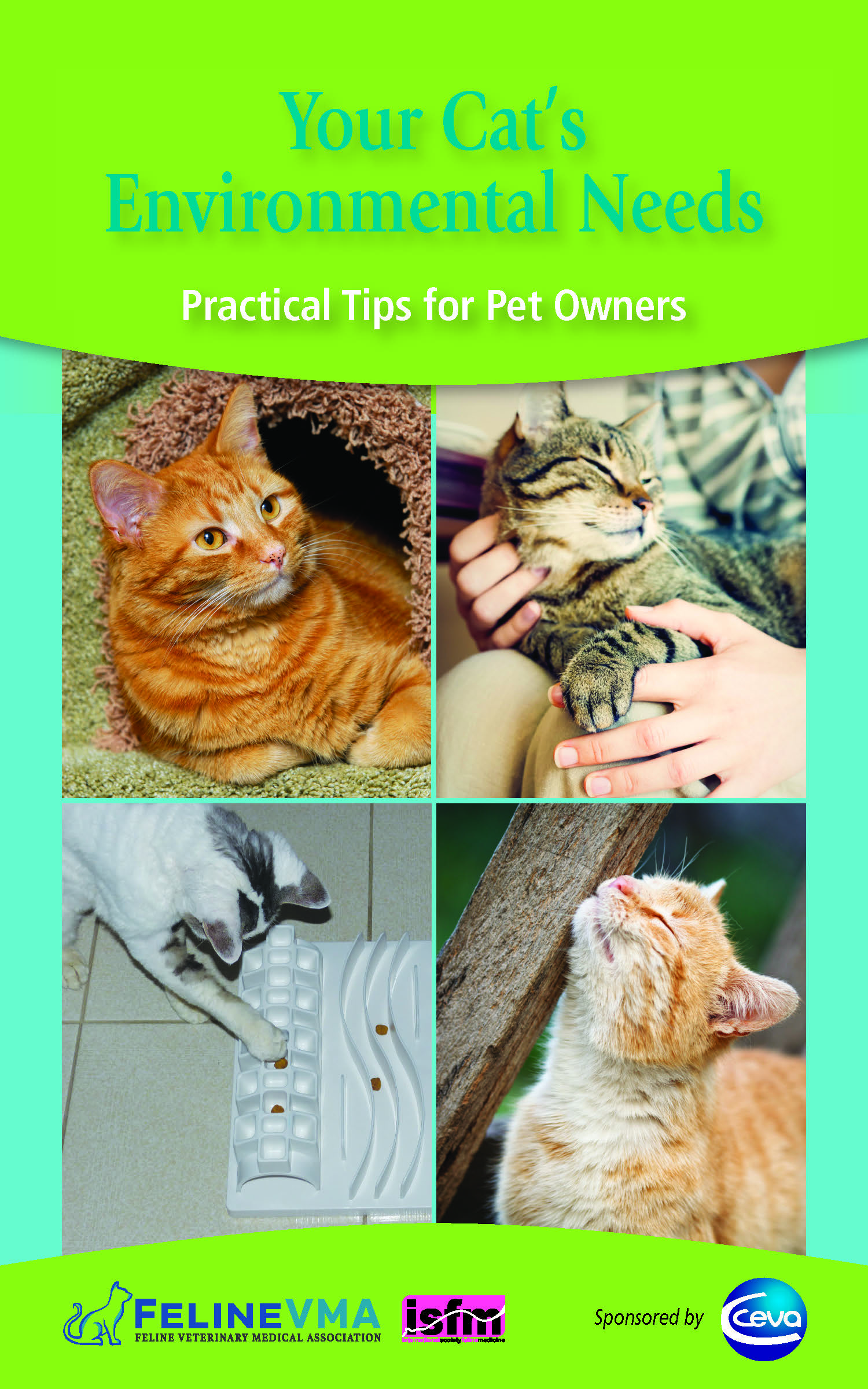Like humans, cats have needs that make them feel happy and secure. To help understand the “core resources” your cat needs, think about what you need when you move to a new apartment/house.
What do you do to feel comfortable and make this new place your home? Typically, we clean, stock the bathroom and kitchen, make up our bed with our own sheets and pillows, and decorate with curtains, pictures, and personal items.
Your cat’s needs are similar and you want to make sure you have an place or environment that makes your cat feel comfortable and secure.
Meeting the Needs of Your Cat
Safe Place
Every cat needs a safe and secure place where she can retreat to and feel protected or that can be used as a resting area. Your cat should be able to enter and exit from this space from at least two sides if she feels threatened. Most cats prefer the safe space to be big enough to only fit themselves, have sides around it, and be raised off the ground.
Multiple and Separated Key Resources
Key resources include food, water, toileting areas, scratching areas, play areas, and resting or sleeping areas. These resources should be separated from each other so your cats have free access without being challenged by other cats or other potential threats.
Opportunity for Play and Predatory Behavior
Play and predatory behaviors allow cats to fulfill their natural need to hunt. Play can be motivated with the use of interactive toys that mimic prey. Cats need to be able to capture the “prey”, at least occasionally, to prevent frustration. Using food puzzles or food balls can mimic the action of hunting for prey, and provides more natural eating behavior.
Positive, Consistent, and Predictable Human–cat Social Interaction
Cats’ individual preferences determine how much they like human interactions such as petting, grooming, being played with or talked to, being picked up, and sitting or lying on a person’s lap.
An environment that respects the cat’s sense of smell and other senses
Unlike humans, cats use their sense of smell to evaluate their surroundings. Cats mark their scent by rubbing their face and body, which leaves natural pheromones to establish boundaries within which they feel safe and secure. Avoid cleaning their scent off these areas. Some smells can be threatening to cats (i.e., unfamiliar animals, or scented products or cleaners) which may lead to problematic behaviors such as urinating outside of the litter box or scratching in undesirable areas.
Review Your Cat’s Environmental Needs Brochure for more information about each of these.
Five Items for a Secure Environment for Your Cat
Food
Provide your cat with predictable meal times. If you have multiple cats, make sure you have individual food bowls for each cat in your household.
Water
Cats need clean, fresh water. Use a location that is appealing to your cat.
Toilet
Provide a convenient, clean, and private litter box for your kitty and be sure to scoop it at least once daily. As a general rule of thumb, the number of litter boxes should be one more than the number of cats in your household. Many cats prefer a larger litter box that is one and a half times the length of their body, and at least one and a half inches deep.
Safe Place to Sleep
Soft bedding, as well as familiar smells and sounds, provides security for your cat. Some cats also like to be provided with soft, cozy places to hide.
Familiar Territory and Elevated Spaces
Face-rubbing and scratching surfaces leaves your cat’s scent, and marks the territory with a personal touch. Be sure to supply plenty of scratching posts to encourage appropriate scratching. Access to an elevated area increases the cat’s vertical space and allows him/her to monitor their environment.
Meeting your cat’s environmental needs can help to avoid stressors that could initiate unwanted behavioral or medical consequences.
Learn more about the basic supplies you will need for your cat to feel secure.
Other Tips
Each cat in your household needs a complete set of the resources listed above. There can be some overlap, but sharing requires that you have an accurate assessment of each cat’s relationship with the other cats in your household. These resources should be located in a low-traffic area, which is free of excess noise (i.e., not near a noisy laundry area) and has at least two ways where your cat can enter or leave. This allows your cat to flee or escape if they feel threatened or stressed. Cats also need to be provided with the opportunity to play in order to allow them to fulfill their natural need to hunt and stalk, as well as provide mental and physical stimulation.



